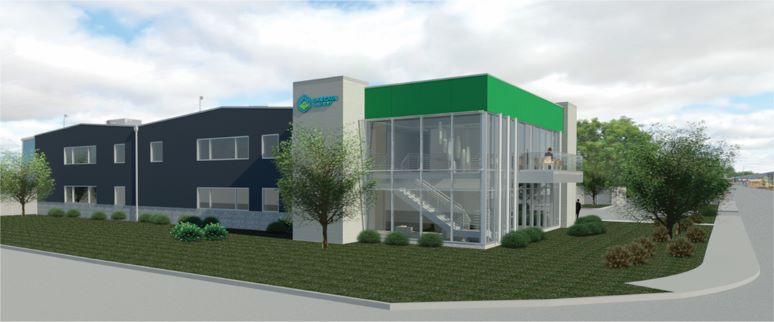Project Profile: Cascade Chemistry
Lab Manager speaks to Jeremiah Marsden, PhD, president, Cascade Chemistry, about the design and construction of this lab facility.

Lab Manager speaks to Jeremiah Marsden, PhD, president, Cascade Chemistry, about the design and construction of this lab facility.
Facility information: Cascade Chemistry, Eugene, Oregon
Size: 28,000 sq. ft.
Cost: $14 million
Project team: Blaise Cacciola (architect); Coffman Engineering (engineering); CS Construction (GC)
Completion date: March 2022
Q: What was the need for this facility? Is it replacing an outdated existing facility or accommodating new research/ a new program?
A: Our clients, who are looking for API process development, manufacturing, and synthetic and analytical services, look to us to help them get new pharmaceuticals into the clinic. We had been successfully developing routes and making smaller batches of GMP drug substance but our clients needed quicker access and larger volumes. This facility will increase our GMP API manufacturing capacity by four to five times, allowing us to help more of our clients in a more timely manner.
Q: Is there anything particularly unique or groundbreaking about your facility or the design plan?
A: Because we’re manufacturing pharmaceutical ingredients destined for human use, the building must handle chemical manufacturing and safety requirements coupled with GMP requirements for a clean manufacturing space.
To support those special functions that take place in the building, every space in each room—all floors, walls, and ceilings—have been designed in detail. Our chemical manufacturing processes demand the utmost care from our employees and operators and the ‘suites’ that these people work in to create our API and synthetic products have been designed to protect both the people and the product. From moving people and equipment in and out of the production spaces to operating, cleaning, and maintaining the facility, each step in the process has been addressed in the building design. What may be surprising to people unfamiliar with our business is how clean and orderly our manufacturing process is. The facility showcases this from the inside out. This project design has been a collaborative effort by our employee team, our design professionals, and Cascade Chemistry leadership to arrive at the best solution for our facility—all for the benefit to make the best products for our clients.

Q: What sorts of challenges have you encountered during the design/build process, and how did you overcome them?
A: Our new facility is redesigned from an existing industrial building that has had a couple of previous lives. The past uses were traditionally industrial and hard on the building, with lots retrofit work done in the past. The new use, though industrial by nature, is very clean and governed by Good Manufacturing Practice (GMP) and enforced by the FDA. A big challenge in this project was to find ways to keep many of the existing building components, including the upgraded HVAC and electrical, while adding new infrastructure needed to meet GMP requirements.
In addition to FDA requirements, we must also comply with traditional local and state building and fire codes, which further complicated the design in terms of meeting all our needs in the footprint of an existing building. Through our collaborative design process and close coordination with the City’s building department, we were able to overcome many design obstacles presented by the existing building. In essence, we have taken an older, utilitarian building and redeveloped it into a state-of-the-art pharmaceutical manufacturing facility. When the project is complete, nearly every existing building element will be upgraded, modified, and/or added to.
To accommodate our growth, we also needed more office space than the existing building provided. We originally designed a two-story addition to house our personnel for the site but quickly realized that we needed more space. Expanding outside the existing building footprint was limited so we added a second floor within the existing building. This was not an easy undertaking. The existing building is actually two buildings, built at different times and connected in the middle. With our two-story addition and the new second floor, we now have four buildings in one. The end result is ample room for our employees and guests—office space, changing rooms, conference space, and break areas are all accommodated in the new design. Another point of interest, to be good neighbors and present a more pleasing building to the public, we placed these ‘people spaces’ to the edges of the building fronting the public streets. The once dark and enclosed industrial building will become an open, daylighted, and aesthetically pleasing redeveloped, modern building.
Q: If a similar facility or program were to look at your lab for inspiration, what do you think they will take away as an example of what they should also implement in their own lab?
A: Looking back three years ago, when we started this process, one thing we did that worked well was to hire consultants with expertise in design and function of GMP manufacturing facilities for clinical and commercial API who had been through this before. They helped us understand what we didn’t know we needed to understand. It led us in some different directions than we initially expected and has been extremely valuable.


